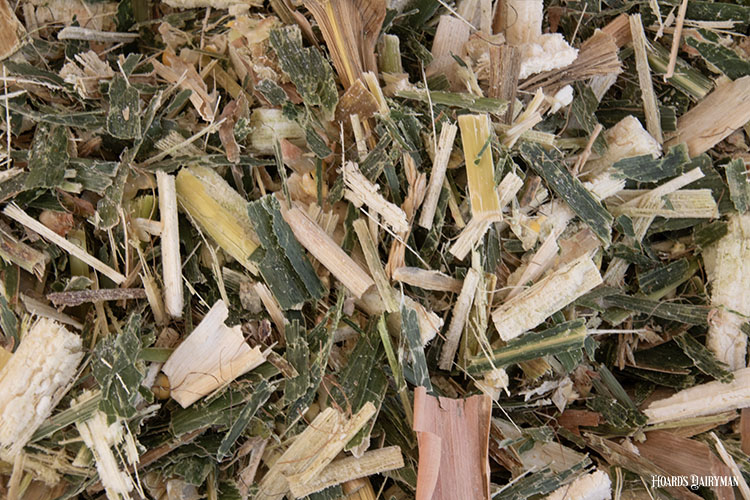
Corn silage has long been known as the cornerstone of the dairy ration, providing a valuable fibrous energy that is difficult to replace in the diet. Over the years, land grant institutes have invested in research efforts around corn including plant selection and breeding, chop length, and silage additives to improve fermentation and feed efficiency.
“Corn is the most efficient starch producer dairymen can plant,” described University of Wisconsin research associate Jose Varela. “You get 700 to 900 kernels on an ear from planting just one seed in the ground,” he highlighted on the "Dairy Science Digest," a podcast hosted by the University of Missouri.
He and his team studied how kernel type impacted starch availability when ensiled. Corn kernel traits and how they impact starch availability could open a window of understanding, allowing dairy producers to make more informed decisions on variety selection, silage pile management, and nutrient analysis.
What makes varieties different?
Corn breeders have been selecting for high yield since corn was first domesticated, resulting in a shift in the kernel to an energy-rich, high starch feed for cattle. The endosperm, or the energy reservoir of the seed, often has at least 75% starch. Studying the makeup of the kernel at a microscopic level, specifically the protein matrix that packages the starch, helps us understand how to make the current starch levels more digestible to the herd. This could be the next frontier for silage varieties.
Kernel vitreousness is a seed-quality visual descriptor associated with the amount and complexity of the protein matrix around starch. Familiar descriptors of vitreousness are floury, chalky, or white versus flint or hard. These adjectives attempt to describe the complexity of the prolamins or zein proteins that “pack” the starch into a matrix — making it less available to the rumen.
It’s easy for corn breeders to measure a significant change in kernel vitreousness with different varieties or even different growing conditions, but does that mean these differences will be observable after fermentation? What about milk yield per acre? Plant scientists want to be sure the benefit is worth the sacrifice. Often, agronomic changes in the kernel have improved starch feeding but result in poor plant performance. Soft kernels commonly have agronomic penalties:
- Reduced germination under unfavorable conditions
- More fungal disease
- Lower test weight (density)
Fermentation breaks down packages
Zein packaging proteins found in corn are hydrophobic, or water-hating. When in the silo, these corn kernels are exposed to roughly 65% moisture. Additionally, the silage juices contain proteases, an enzyme that breaks down protein.
To understand how ensiling changes starch availability to the rumen over time, the research team analyzed kernels with different zein packaging 0, 1, 2, 4, and 8 months after chopping.
“We observed an almost linear decrease of total and α-zeins, in all varieties, the longer you store your kernels in a silo condition,” confirmed Varela. Lower α-zeins mean the starch in stored corn silage is more available in the rumen of the longer silage ferments.
Alpha zeins are easy to measure in the lab and have been found to be tightly correlated with in vitro starch digestion. Analyzing α-zeins will provide producers a good understanding of how to expect their silage to perform when fed, without the expensive lab analysis such as digestibility assays. This is important information for producers across the nation who have recently experienced drought conditions, as some may attempt to reduce daily feed costs by feeding greenchop.
Silage not yet fully fermented will have the α-zeins still present, locking the starch in the kernel regardless of kernel processing. Allowing your silage ample time to ferment — data suggests 120 days or more — will ensure the optimum nutrient availability for feeding your herd.
Investment potential
Corn silage in the bunk is like money in the bank. The longer you leave it, the more it improves. The biology of fermentation unlocks the nutrients to make what would normally pass right through the cow become available to fuel lactation and support the herd.
Many farmers are through silage chopping for the year. Some will need to feed greenchop just to get by. However, now is the time to create a forage inventory for the year. Determine the tonnage on hand, factor in shrink, and chart a path forward for 2024’s silage harvest to allow the pile to unlock those nutrients for the herd.
These findings were summarized in a peer-reviewed open-access Journal of Dairy Science at article found at: www.journalofdairyscience.org. To learn more, listen to the monthly podcast, Dairy Science Digest, on your favorite podcast platform.








